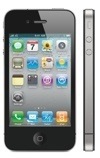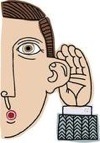Neither snow, nor rain, nor gloom of 3G-only networks will deter iPhone fans. As the end draws near for AT&T’s exclusive hold on the Apple smartphone, uSamp (http://www.uSamp.com), a technology and online sample companies, has released a nationwide survey of AT&T and Verizon customers to gauge their plans for the Feb. 10 launch of Verizon’s iPhone.
The conclusion: a stalwart group of iPhone enthusiasts intends to line up on day one, regardless of severe weather, product quirks and service uncertainties. Drawing from its online panel from Jan. 28 to Jan. 31 to query AT&T customers — as well as current Verizon users of Android and BlackBerry phones — uSamp surveyed more than 700 smartphone users, finding that 29% of AT&T customers who intend to switch to Verizon for the iPhone are willing to wait in line on Feb. 10 to get it. Among existing Verizon customers who plan to get the iPhone, 24% report a willingness to stand in line, too.
For young consumers, devotion to the iPhone is even more intense: among AT&T customers intending to switch, 35% of those ages 18-24 and 50% of those ages 25-34 are willing to wait in line on the Feb. 10 launch day. For Verizon’s current BlackBerry and Android users who report plans to switch to the iPhone, 46% of those ages 18-24 and 34% of those ages 25-34 agree to wait in line on day one.
The uSamp survey affirms initial reports of widespread defections from AT&T. According to the survey, more than a quarter of current AT&T customers (26%) intend to switch to Verizon’s iPhone on the day it becomes available. For now, however, the remaining 74% would rather wait than switch.
According to the uSamp survey, 47% say it is “very unlikely” that they’ll jump ship, 12% say it is “somewhat unlikely,” and another 15% report it is neither likely nor unlikely. Twenty-six percent of AT&T customers say they are “very likely” (8%) or “somewhat likely” (18%) to switch to Verizon’s iPhone on Feb. 10.
By contrast, a majority of Verizon’s current Android and BlackBerry users already have iPhone fever, reporting that they intend to head to Apple as soon as the iPhone hits the shelves: 54% are very likely (25%) or somewhat likely (29%) to go iPhone on Feb. 10. Research in Motion, take note: fully two-thirds of Verizon’s BlackBerry users (66%) report they are very or somewhat likely to switch to the iPhone that day, as are nearly half of its Android users (44%).
As AT&T loses its monopoly on the iPhone, its customers who plan to switch to Verizon have one clear-cut reason: dropped calls (48%). Other factors cited: carrier coverage (25%), product features (22%) and other reasons (30%).
For switchers among Verizon’s current Android and BlackBerry users, it’s all about the cool features: the interface (60%), web browser (58%), media (51%), memory (43%), and camera (41%).
Still, brand loyalty isn’t dead by any stretch. The top two reasons Verizon’s current smartphone users do not plan to give up their Androids or BlackBerrys in favor of the iPhone: conversion costs (46%) and the keyboard (34%). Other reasons not to switch included functions such as e-mail and messaging (23%), maps and GPS (23%), customization and widgets (20%), web browser (19%) and, for BlackBerry users, BlackBerry messenger (28%).
In addition to top-line results, the data reveals some intriguing differences among AT&T customers and Verizon’s current BlackBerry and Android users, including along demographic lines such as age, gender and region. The findings include:
° Men are more likely than women to switch to Verizon’s iPhone (32 % of males at AT&T are somewhat or very likely, vs. 20% of females; 58%of males at Verizon, vs. 51% of females).
° Younger customers are not only more willing to wait in line for Verizon’s iPhone on Feb. 10 but, in general, they are more likely to make the switch: 36% of AT&T customers ages 18-24 and 41% ages 25-34 are very or somewhat likely to switch (vs. 26% for all AT&T customers); for Verizon’s current BlackBerry and Android users, 71% of those ages 18-24 are somewhat or very likely to switch on Feb. 10, as are 60% of those ages 25-34 (vs. 54% of all Verizon BlackBerry and Android users).
° Midwestern Verizon users of BlackBerry and Android are least willing to wait in line for the iPhone on Feb. 10 (13%, vs. 31% in the South, 26% in the Northeast, and 22% in the West). Regional differences among current AT&T users are minor (31% for both the Northeast and the South, 29% for the Midwest, and 25% for the West).
uSamp’s iPhone survey was conducted online among 727 U.S. residents between Jan. 28 and Jan. 31, using the uSamp/DMS River Sample methodology and resulting in a 3.6% margin of error. For a full copy of the report, which includes data by gender, age and region, email rochelle@edgecommunicationsinc.com .




